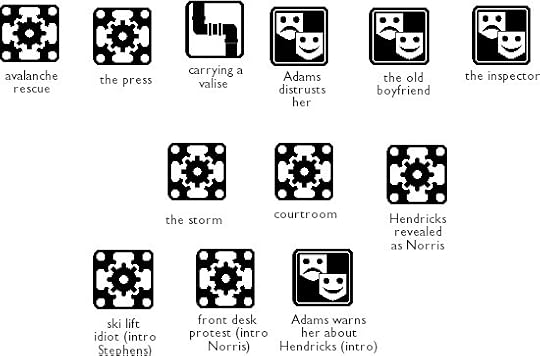From Plot Point to Scene

I'm currently plotting a novel. As I shape it from an initial premise to a series of incidents, I'm in part relying on the Hamlet's Hit Points beat system. When I'm finished, this will give me a visual map of the story, allowing me to make sure that the action varies between scene types, and that it establishes the rhythm of up and down moments required for an engaging narrative.
The first step is to lay out all of the pivotal story points, as established in the premise, and then to see what moments I require to introduce, build, and resolve them. Some of these moments are obviously procedural beats, in which the characters pursue practical, external goals. Others are scenes of drama, in which interaction arises from the characters' emotional needs.
At this early stage, however, I can't always see how I'm going to introduce a given plot point. So I label most of them as pipe beats. These beats convey information that will be needed later. 
(As you have probably guessed, these are not the real plot points from the actual work-in-progress.)
Ideally, exposition is conveyed in a seamless way, slipped into a scene that does something else. Or it can become gratifying in and of itself if broken up, into a question that is later followed by a reveal. Obvious pipe beats either tip the author's hand, or bore the reader with a long, tension-free infodump.
My next stage, then, is to look at each pipe beat and see if it can be conveyed not in an obvious fashion, but in the course of either a dramatic or a procedural scene.
In this next stage of the preliminary outlining process, the pipe beats have begun to disappear. The story is beginning to build from a set of points into full scenes, vessels for suspense and emotional engagement.
Now I just have to fit them all together, in a clear and logical chain of events that keeps the spotlight on the people in the story, while avoiding the twin banes of coincidence and contrivance.



